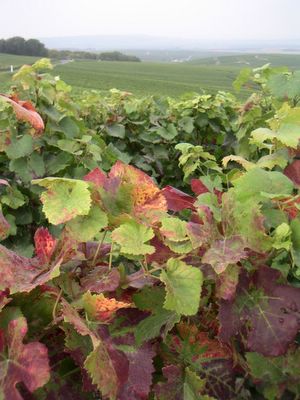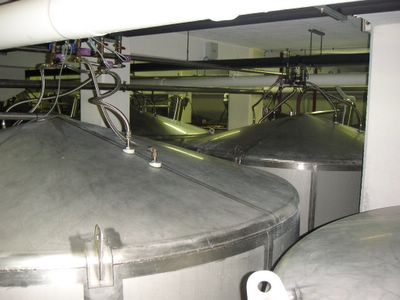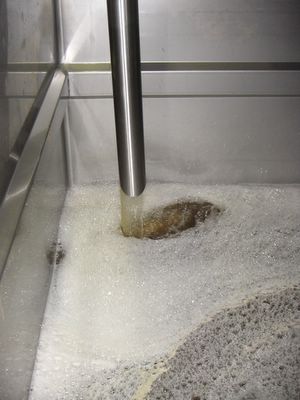 Sea of vine in misty haze. Outside Verzenay.
Sea of vine in misty haze. Outside Verzenay.A bluish haze has replaced the clear Indian Summer of the happy days of the
vendange. The vineyards and the villages in our part of the Montagne de Reims lies as an ethereal and misty vision the major part of the day.
Gone are the colomns of tractors and vans with their grapeboxes on the way to the presses. Gone are the temporary gipsy camps. Gone the extra hands hired to pick the grapes. The quiet times is up, and well in tune with the weather.
Many of the locals find the weather dull. They prefer to see the sun every day, and at the moment it seems to have very little time to spend in our company. Should there be any at all, it is likely to be for a short while only and in the very late afternoon.
It is the third time, I experience this quiet pretty weather, and I love it. Not a wind moves, and the temperatures reach up to 20 degrees Celsius in the end of the afternoon. The overall range of colours stay in the soft end of the blue, grey and green. But not for long now.
 Autumn leaves on Pinot Noir in Verzy.
Autumn leaves on Pinot Noir in Verzy.Since it is right now that the wine performs the last supreme effort before winter. The green leaves is moving into the fantastic colour palette of the autumn. It is in these weeks, that the colour of the leaves changes from green and into fantastic combinations of yellow, orange and red.
When the first frost is here, the symphony of colours will end. The leaves can fall in one single day, which is the end of the green cycle of the wine. Then the hibernation period begins. The sleepy atmosphere everywhere however is only apparent. The winemakers continue their work indoors.
The must of the grapes has now fermentated into the first still wine or wines in the
cuveries at both small and big producers. From each plot and each variety of wine (cépage) there is a still wine to make. In our family we have three different plots, planted with Pinot Meunier and Chardonnay, thus supplying us with six different wines or
crus, that can be blended in different ways and proportions to create different styles of champagne.
 The young still wine is still kept in tanks like these.
The young still wine is still kept in tanks like these.Around the month of December the wine will be tasted and the future blending of it decided. Champagne - unlike other wines - is blended, and the final blend can consist of many different still wines.
When the final blend has been done - some time during next year - it will be transferred to bottles in the proces called
tirage. That is when the second fermentation will start, and this is the period, where the bubbles develop.
In EnglishCopyright: The copyright for text and photos at bobler.blogspot.com belongs to Solveig Tange. You may use my articles, photos or parts of them for non-commercial use and if I am credited as the author. Feel free to link to this site but not in your own frameset please.















